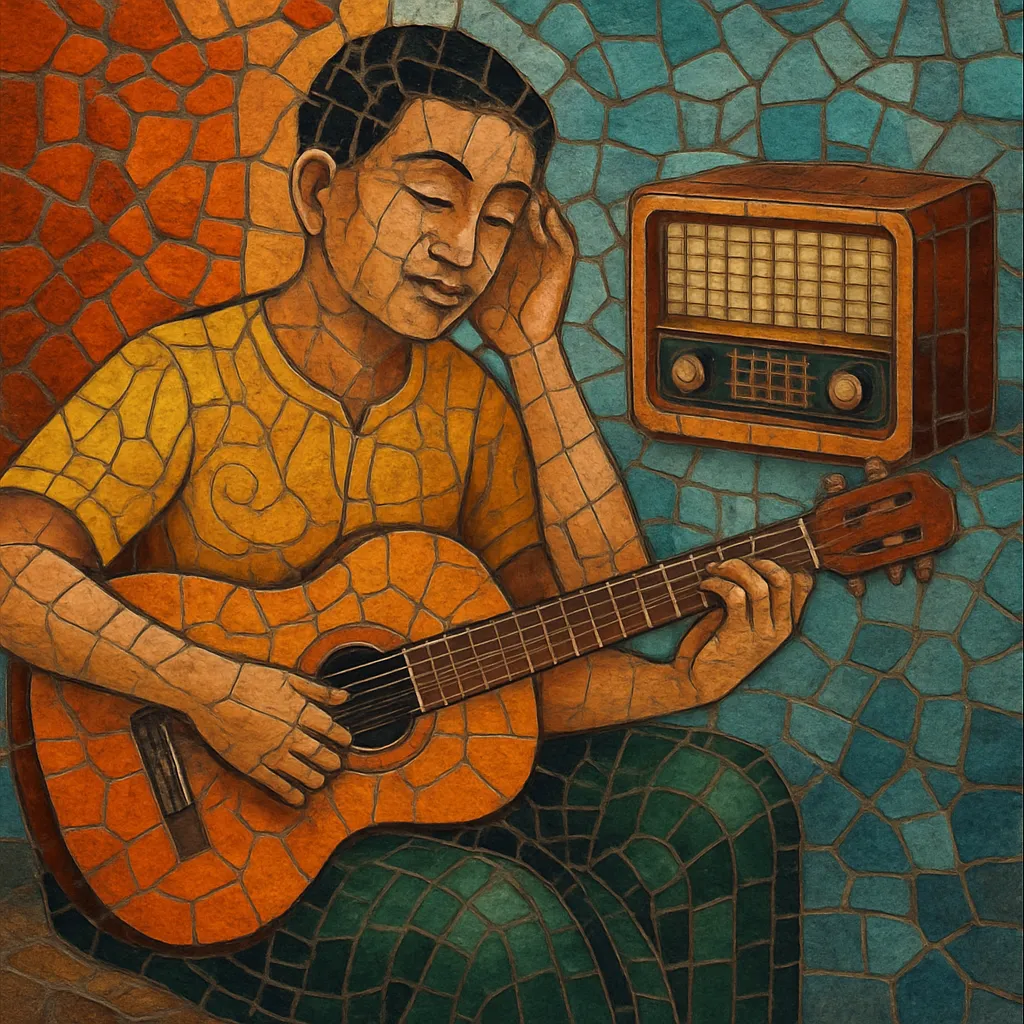Burmese stereo refers to the wave of Burmese popular music recorded with stereophonic equipment during the late 1960s through the 1980s, after Myanmar’s studios transitioned from monaural to stereo recording.
It blends Western pop-rock idioms—beat music, rock and roll, garage, surf, psychedelic rock, soul, and funk—with Burmese melodic sensibilities and Burmese-language vocals. Typical recordings feature tight rhythm sections, prominent electric guitar (often with spring reverb or mild fuzz), Farfisa/Hammond-style organ, occasional brass, and three- to four-part vocal arrangements.
Compared with the earlier “Burmese mono” era, Burmese stereo showcases wider imaging, clearer separation of instruments, and more polished arrangements. Releases circulated on vinyl, open-reel, and especially cassette, and often included localized covers of Western hits alongside original songs.
With the import of Japanese and European stereophonic tape machines and mixing consoles, Yangon (then Rangoon) studios began adopting stereo recording. Local bands influenced by The Beatles, The Shadows, American R&B/soul, and late-60s psychedelia adapted these sounds to Burmese melody and prosody, inaugurating a distinct “stereo era.”
Throughout the 1970s, Burmese stereo became the dominant studio sound for urban popular music. Arrangements tightened, organs and clean electric guitars carried hooks, and producers leaned into left-right imaging (e.g., rhythm guitar panned one side, organ the other). State oversight and a modest studio ecosystem encouraged self-reliance and resourceful production, but did not prevent a steady flow of romantic ballads, danceable beat numbers, and localized covers.
Affordable cassettes expanded circulation. Funk and disco-inflected grooves appeared, as did early synthesizers, while core elements—Burmese-language lyrics, guitar/organ interplay, and crooning vocal styles—remained. Stereo mixes grew more refined, with clearer drum/bass locks and more deliberate use of panning and reverb.
By the late 1980s and 1990s, synth-pop and harder rock styles took center stage, but the Burmese stereo sound left a lasting imprint on production values and songwriting. In the 2010s, global crate-digging and online reissues renewed interest, and samples from the era began appearing in vaporwave and allied sample-based scenes, cementing its archival and aesthetic significance.


